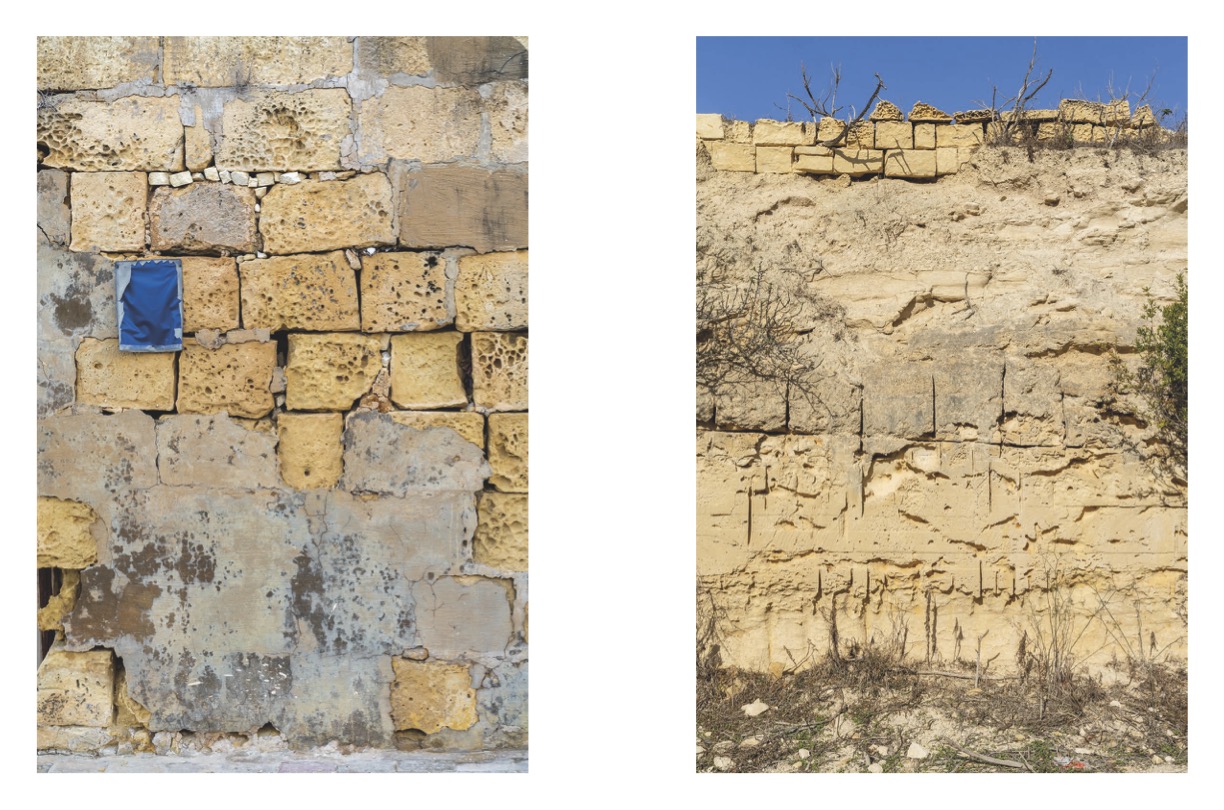


SAND No.2:
L-GĦARB, 2023
Magazine, 64 pages, color, 210 cm x 280 mm, Edition: 100
SAND is a self-published monothematic photo essay in the form of a magazine.
SAND No.1 was published on the occasion of "BfF #1", the first Freiburg Bienniale, in 2021.
| – |
The first thing that struck me arriving on Gozo was the absurd number of walls scattered across Malta’s smaller sister island - an almost surreal testimony to a seemingly unwavering will to build. Likely due to the scarcity of large trees in the rugged landscape, the earliest inhabitants of Gozo relied on rocks as their primary building material for shelter.
Our house was located in L-Għarb, a village and administrative community in Malta whose name derives from the Arabic word for West. Unsurprisingly, it was at the westernmost point of the island of Gozo, surrounded by a fragmented agricultural landscape: over the centuries, farmers had literally reshaped the surface of the land, creating terraces in the hilly landscape to make use of the limited resources available and to protect them from erosion.
Rubble walls, known as ‘Ħitan tas-Sejjieħ’, are a prominent feature of the Maltese landscape: built without cement or mortar, these dry stone walls testify to the skill and historical knowledge of Maltese farming communities. The construction of dry stone walls became widespread during the Arab occupation of the islands between 870 and 1127 A.D., and apart from their visual impact, they continue to serve as vital structures for the islands’ ecosystem, such as intercepting the rain, protecting the arable soil and acting as refuge for its flora and fauna. In recent years, and with the support of EU funding, several restoration projects have been carried out and many kilometres of rubble walls have been restored or rebuilt.
In addition to being one of the oldest Gozitan villages, L-Għarb is of historical significance because of the remains of Neolithic and Bronze Age settlements. On the outskirts of the village, the Ta Pinu National Sanctuary overlooks the countryside, a picturesque Roman Catholic basilica that is considered the most important place of pilgrimage in the archipelago and an architectural masterpiece. The circular open space in front of the church is adorned with mosaic panels and marble statues, while also providing mesmerizing views of the surroundings.
Contemporary architecture in Malta attempts to combine the local vernacular with the modern, with varying degrees of success. Throughout my stay, not only in L-Għarb but in every other place we would visit, another unmistakable element of Gozo’s identity consistently revealed itself: the honey-coloured Globigerina limestone, formed from the microscopic remains of deep-sea creatures roughly 14-23 million years ago.
Maltese limestone is still the preferred building material on the islands, and quarrying has played a central role in the country’s economy since the earliest known times: from 5,000-year-old temples to rural sheds, medieval fortifications, churches, public buildings and private homes, the stone structures are testimony to the importance of this industry and its impact on the social and cultural heritage of the country.
In the European context, Malta’s quarrying industry poses a particular problem: the smallest country in the EU has 30 aggregate quarries and around 60 dimension stone quarries supplying the local construction industry. This concentration of quarries amidst urban development sets Malta apart, likely making it unique in Europe. However, the growth of the industry is hampered by limited territorial and aggregate resources, exacerbated by the island’s insularity, which makes it difficult to modernise and restructure in the face of increasing global competition.
Wherever I looked, the ubiquitous presence of bricks, the most elementary of building materials, became emblematic of the delicate balance between the drive to modernise and the imperative to preserve an architectural heritage. And while limestone as a natural resource is abundant in Malta, the environmental impact of quarrying on health and landscape is becoming increasingly difficult to ignore in a country where the construction sector represents by far the largest industry, necessitating a heightened focus on sustainable practices and responsible resource management.
Text: Niklas Goldbach
Download pdf (16 MB)
